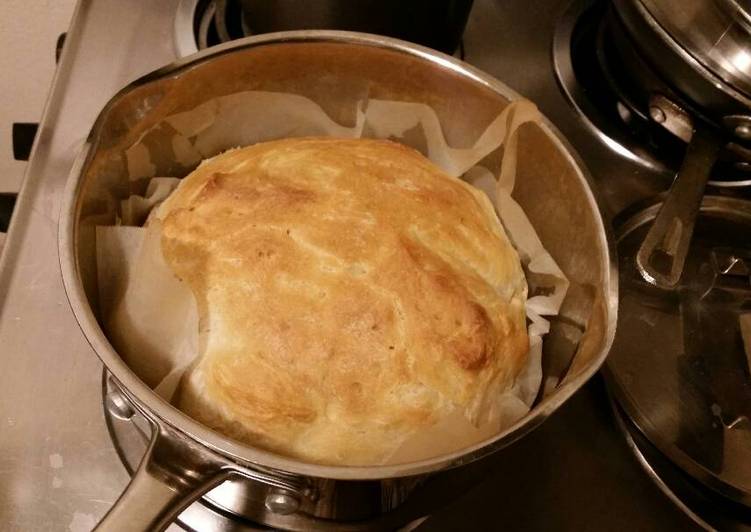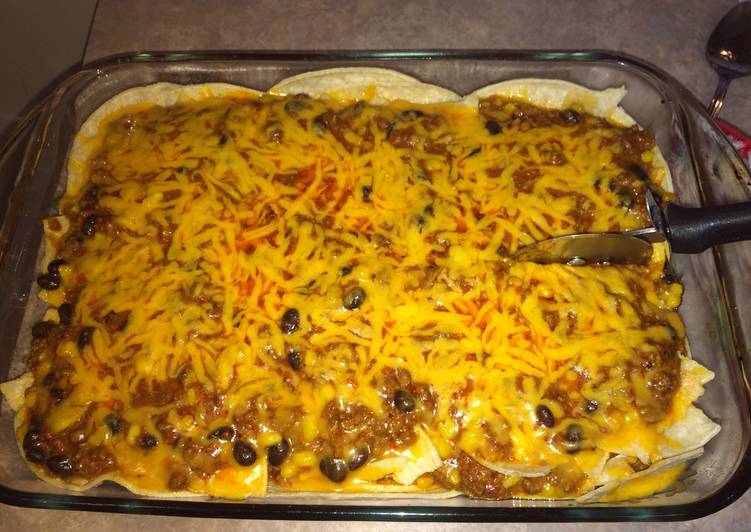
Hey everyone, I hope you are having an incredible day today. Today, I will show you a way to make a special dish, bread in an afternoon. One of my favorites food recipes. For mine, I am going to make it a little bit unique. This will be really delicious.
Great recipe for Bread in an Afternoon. I kept trying out no-knead recipes but they didn't work for me. And then came the day I was broke, no bread but I sure had plenty of bread flour!
Bread in an Afternoon is one of the most favored of current trending meals on earth. It’s enjoyed by millions daily. It’s simple, it is quick, it tastes delicious. Bread in an Afternoon is something which I’ve loved my whole life. They are nice and they look wonderful.
To begin with this recipe, we must prepare a few components. You can have bread in an afternoon using 7 ingredients and 13 steps. Here is how you cook that.
The ingredients needed to make Bread in an Afternoon:
- Take 1/2 Tbsp instant dry yeast
- Get 1/2 tsp sugar
- Prepare 1/2 c 110°F (90°C?) water, filtered
- Get 3 c bread flour, AP is fine
- Prepare 1/2 tsp salt, kosher isn't necessary
- Make ready 1 c room temp water, filtered
- Get 1-2 Tbs coconut or sesame oil if bread is to be stored
Overall, Bread & Pullet's Gentleman's Afternoon Tea is just a snapshot of the creativeness and cleverness that is involved with the planning and creation of these themed afternoon teas as it was so well thought out to the point that my dad, a non-afternoon tea lover, thoroughly enjoyed it. Afternoon tea with no clotted cream - HERESY. There, now I've got that off my chest I feel a little better. The mousses do look tasty, although taking away the joy of bread, even in a 'healthy' tea seems like such a shame… Fresh-baked bread is a special treat, a delicious treasure of a home-cooked meal.
Instructions to make Bread in an Afternoon:
- In a small bowl, mix yeast, sugar and warm water until yeast and sugar dissolve. Make sure water isn't above 115°F (95°C). Cover with a pot lid or dish towel for 5 mins to proof. If it doesn't foam in that time, start over with fresh yeast.
- In a large bowl mix flour and salt. Stir well with a sturdy spatula. Set oven to warm and a 3 qt. pot of tap water to boil (this is my secret weapon to a good, quick rise). Fill it to about an inch from the top and bring it to boil then turn it off.
- Place the pot of steaming water, w/out the lid!, in the oven, and close it back up, while it's still warming. Add the proofed yeast to the flour and mix it in well. Then begin adding the room temp water in 1/4 c portions. Add the oil as well, if you're choosing to. Use the spatula throughout or you'll have a mess ON your hands!
- Once your dough and water are thoroughly mixed, you can either oil a crock pot liner or another 3 qt pot, or add a bit more oil to the bowl, just on the sides, so the dough ball is covered and you can roll it around with your hands finally. You'll find you can. And whatever you do, DON'T use butter! You'll find it'll make things stickier because of the milk solids in it. Stick to an oil of your choosing.
- Roll the ball of dough a bit, just enough to coat it with oil and to stretch the surface to form a skin on top, tucking it underneath, like a dumpling. Place it back in the bowl and place a piece of OILED parchment, oiled side down, on top of the bowl, and the bowl in the oven. Turn OFF the oven as soon as the bowl is in. If you have a light, turn it on. Place the pot of water in front of it.
- Set a timer for 1 hour. After which your ball of dough SHOULD be doubled. If it hasn't, put it back in for another half an hour. Set your timer. If your pot of water has cooled, boil a 1 qt of water on the stove and just switch the pots.
- Assuming your ball DID double, use the spatula to punch down the dough. Pour out the water from the 3 qt saucepan and oil it lightly. Place the oiled parchment you used, this time oiled side UP. Don't worry if it doesn't cover the sides all the way.
- Add some oil to the sides and roll the ball of dough as before. Taking a CLEAN pr of kitchen shears, dip them in oil first, shaking off the excess, and use them to make cross cuts on top. Place it into the LINED 3 qt saucepan and boil water in a smaller saucepan.
- Place the dough pan in the back of the oven, the water in front so it's easy to get out. Turn oven off (leave the light on if you have one), set timer for 30 mins.
- WITHOUT taking the dough out of the oven, raise the oven temp to 450°F (280°C) and bake for 20 minutes. When the timer goes off: First remove the pot of water, then take out the dough and brush or spray with water for a crunchy crust. Rub with oil or butter for a soft one. You can sprinkle salt or seeds at this point. Put the loaf back in and…
- Bake for another 15 minutes and check the temp with an instant read thermometer. From the side into the center, it should read at least 200°F (95°C but I'm NOT sure if these Celsius temps are correct, so check them, PLEASE!). If it isn't, give it another 10 minutes, then check again, until it reaches the right temp.
- I have learned that baking my loaves for the first half with the pot lid off, then the 2nd half without a lid, gives me perfect temp EVERY time, but not perfect color. My oven is pretty tiny though and I can't put it on a tray that 2nd half. If anyone tries it, please comment!
- These aren't instructions just options: you can modify this recipe to your heart's delight! Cut up apricots, dried cranberries, olives, 1 1/2 Tbs of dried rosemary, 2 Tbs of good, virgin olive oil; 1/4 cup CUBED pecorino Romano, or a REALLY good Parmesan! Added with some roasted garlic, maybe 1 - 1 1/2 Tbs of it. Just no more than 1/4 cup of dried addition, right? And bon apetit!!
But we know how hard it can be to tackle bread. Some days you have a whole day to devote to the kneading, rising, and tending of a loaf of artisan bread. We're here to tell you that you can indeed get hot biscuits. Pita is actually a very straightforward bread dough: water, flour, yeast, salt, and that's about it. What makes it puff so impressively is the dual action of water turning to steam and the yeast becoming hyperactive when both are hit with the heat from the oven or stovetop.
So that’s going to wrap it up for this special food bread in an afternoon recipe. Thank you very much for reading. I am sure that you can make this at home. There’s gonna be more interesting food in home recipes coming up. Remember to bookmark this page on your browser, and share it to your family, colleague and friends. Thanks again for reading. Go on get cooking!

